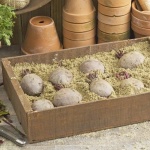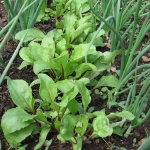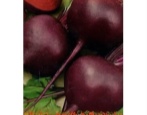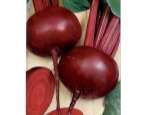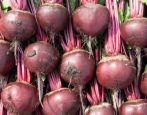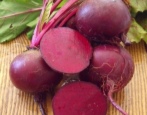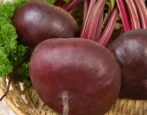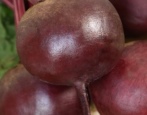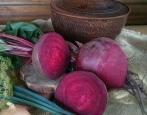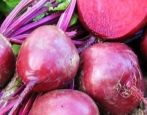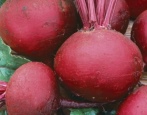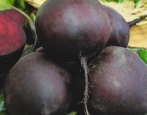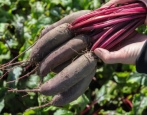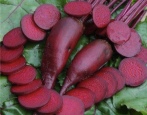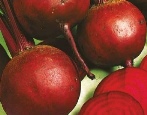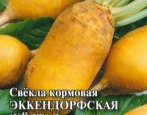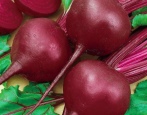
- Leaf rosette shape: semi-standing
- Leaves: slightly wavy at the edge, light green or green with red veins
- Petiole: intense red
- The form: flat and flat round
- Weight, g: 160-400
- Pulp color : dark red
- Ringiness: often with blackish rings
- Taste qualities: good ones
- Appointment: for culinary processing, for canning
- Storage: suitable for winter storage
The incomparable A463 table beet lives up to its name. For several generations, gardeners have considered it one of the best varieties of root crops. The taste of the culture, rather juicy and sweet pulp, as well as its early maturity and good keeping quality are excellent.
Breeding history
The variety of table beet with the original name Incomparable A463 was bred in the pre-war period at the Federal Scientific Center for Vegetable Growing. The registration application is dated at the end of 1938, and the culture was included in the State Register and approved for use in 1943.
Description of the variety
The incomparable A463 belongs to the mid-early varieties of beets. Despite the early maturity, root crops are very well stored almost until spring. As for the peculiarities of the culture, it does not really like heavy soils, has an average resistance to cercosporosis, resists flowering well and tolerates cold weather.
Characteristics of the appearance of the plant and root crops
Plants of this variety have a semi-erect and high rosette of leaves. Beet leaves are light green or just green, pigmentation is observed at the end of the growing season. The petioles are elongated, thickened, intense red in color, include light streaks.
Root crops of the Incomparable grow flat-round or flat. The weight of the specimens varies from 160 to 400 grams. The skin of the vegetable is dark red, grayish at the head. The pulp is also dark red, with almost black rings.
Purpose and taste of tubers
Perhaps the most important difference between Incomparable is its excellent taste, as evidenced by everyone who used the product for culinary processing, as well as for canning. And we don't even have to talk about the possibility of winter storage: it is above all praise. Many people like that beets are round in shape and size, neat, never huge. The peel of the root vegetable is thin, the pulp is so sweet that you can even cook compote. Delicious when baked, which makes it even sweeter. Salads and vinaigrettes are also delicious with it.
Maturation
Beetroot Incomparable A463 is classified by experts as medium early varieties. It often takes 69-99 days from the first crop germination to harvest.
Yield
One of the positive qualities of the described beet variety is its high yield. On average, one square meter of planting gives 2.9-7 kilograms of root crops.
Growing regions
The variety Incomparable A463 was zoned in the Central and Ural regions even at the time of its entry into the State Register. Much time has passed since then, and the culture has taken root in other regions with similar climatic conditions.
Growing and care
Sowing the seeds of the Incomparable falls on the end of April and the beginning of May. The recommended seating scheme is 6x30 cm. The seeds are buried in open beds by 2 centimeters.After the seeds sprout, it is necessary to thin out the plantings. The seedling thinning procedure is carried out in two stages. For the first time, the beetroot sprouts are thinned out after the appearance of four leaves (that is, two pairs). After the roots themselves grow up a little, reaching 2-3 centimeters in diameter, the next thinning is carried out. Plants will also need regular irrigation, loosening the beds, weeding, feeding.

Beetroot tolerates cold snaps, therefore it is widely grown in the open field. When planting beets, you need to correctly determine the sowing time, choose a suitable place, prepare the beds, and do pre-sowing seed treatment.
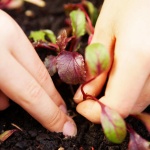
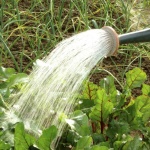
Disease and pest resistance
The incomparable A463 is distinguished by its strong immunity. The culture is not subject to flowering, that is, shooting. However, the variety has relative resistance to cercosporosis.

